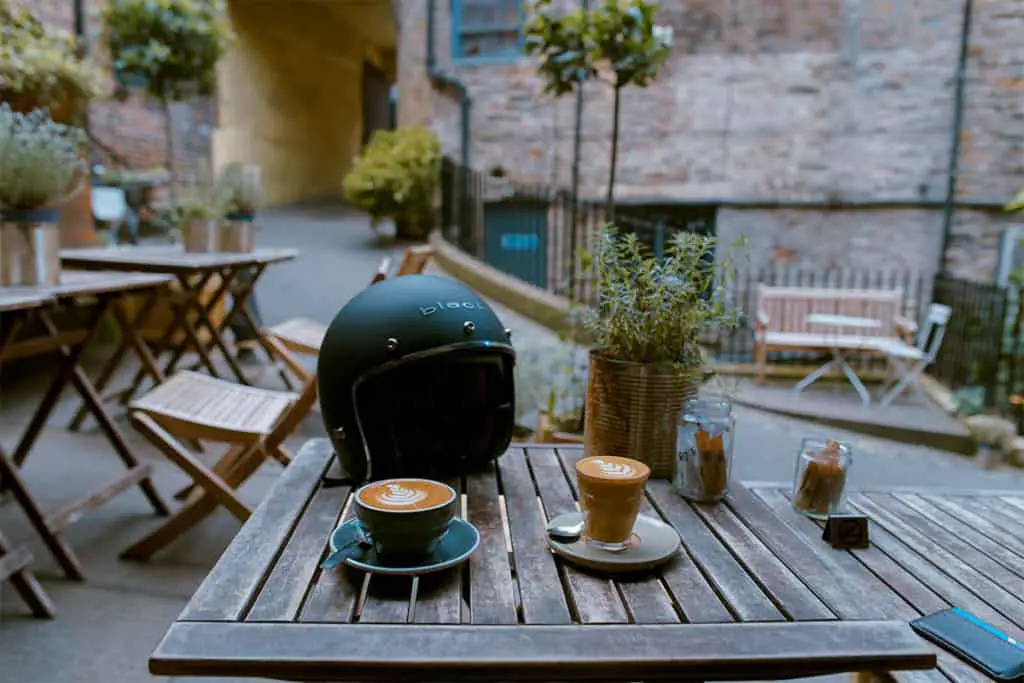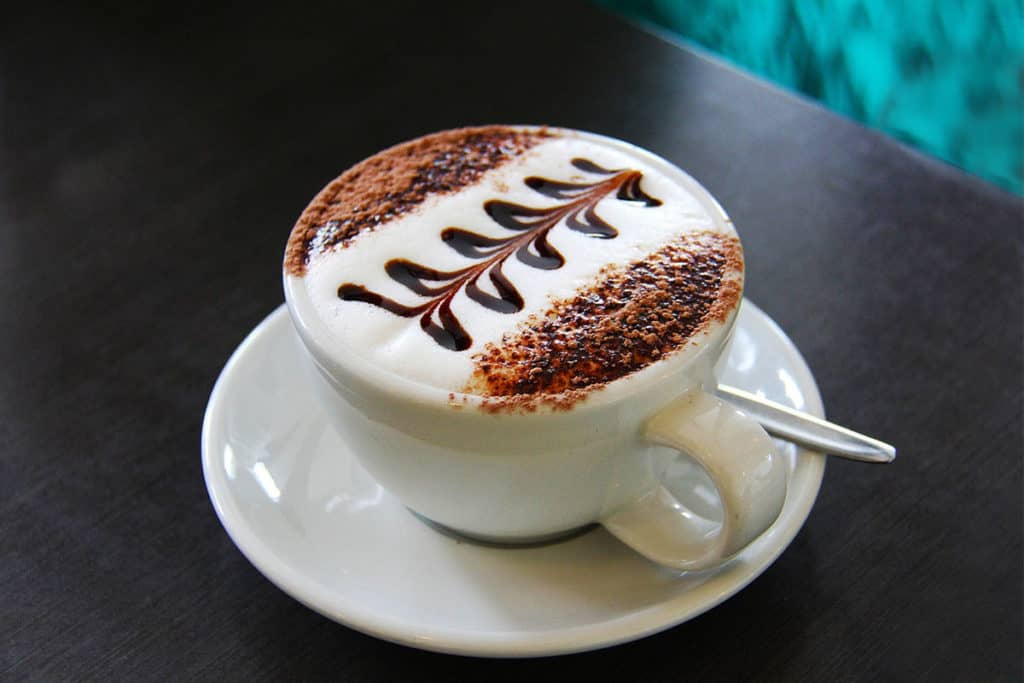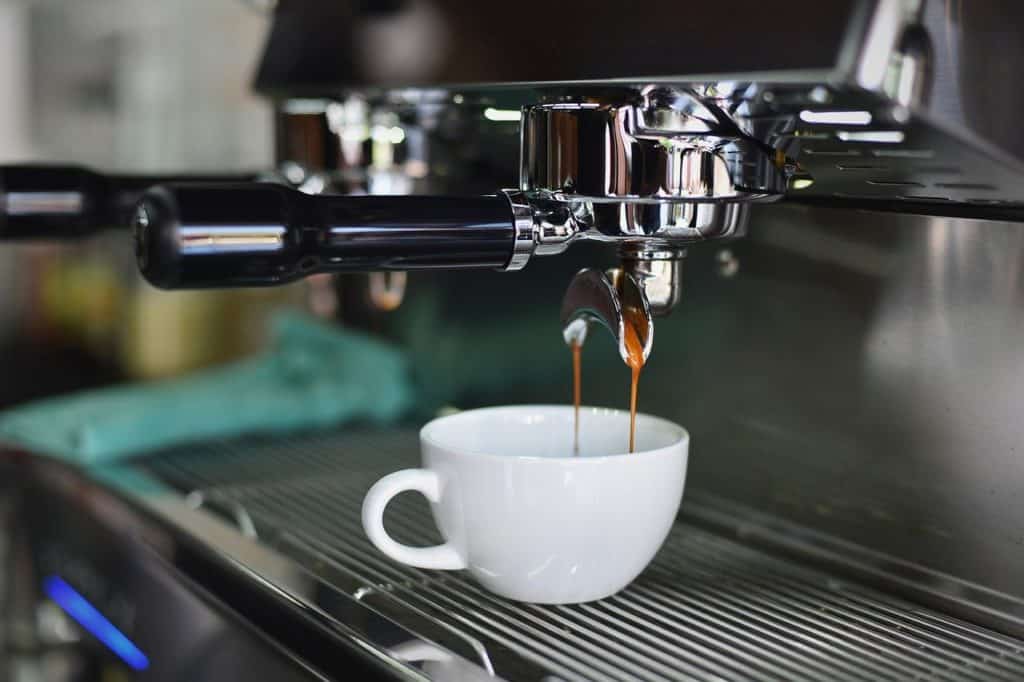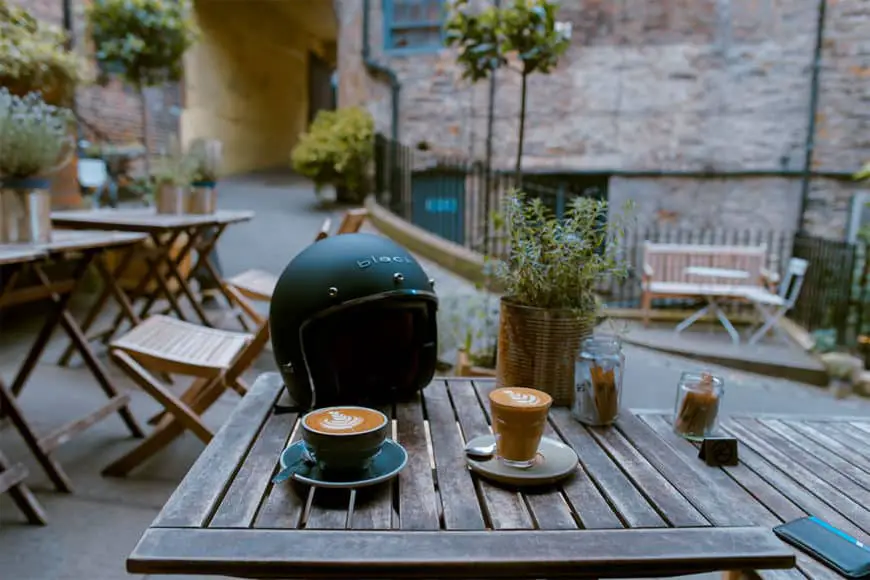
A flat white is a simple, yet rich and velvety drink, typically made with a double shot of espresso and steamed milk. The milk is usually textured to a microfoam consistency, which creates a smooth and creamy texture that is poured over the espresso. A flat white is typically served in a small ceramic cup, and it is known for its strong coffee taste with a hint of milk sweetness.
With all that said many people still have trouble understanding what the difference between a latte and a flat white is. So, in this article I will go into more detail about where they both came from, how the milk is frothed, the amount of espresso in each and the different cup sizes that each use.
The Origin of the Latte

With the help of the Oxford English Dictionary, we can trace the word ‘latte’ back to the 19th century, around the 1860s. However, the combination of milk and coffee had been around since the 17th century and many countries had a different name for their milk-based coffee drink: a milchkaffee in Germany, a Wiener melange in Austria and a café latte in France.
The difference between those drinks and the contemporary latte lies in the way the coffee was brewed. There was no espresso machine back then, so instead of espresso shots, coffee shops simply used freshly brewed coffee.
The word ‘latte’ itself means milk in the Italian language and it was in Italy that the espresso culture thrived in the mid-20th century. The espresso machine revolutionised the way we drink coffee and new ways of serving coffee were invented, such as the cappuccino.
The latte, as we know it today, rose to prominence during the 1980s in Seattle as a milder alternative to the heavy cappuccino. Variations of the drink include seasonal flavored syrups, non-dairy milk and even the substitution of coffee with chai tea or matcha, resulting in the chai latte or the matcha latte.
The Origin of the Flat White
The flat white is a modern day coffee invention in comparison to the latte. There is actually an ongoing debate about whether the flat white was developed in Australia or New Zealand. Whatever the case may be, it all started down under during the 1980’s.
Rumor has it that customers were looking for an alternative to the cappuccino. The issue was the foam, which can sometimes be a lot in a cappuccino, so the customers asked for it ‘flat’. Starbucks picked up on this new trend in 2015. Their coffee shops started serving flat whites in the U.S. and the rest is history.
Difference in Serving Size

This is one of the key differences between the two drinks. The Flat white comes in slightly smaller cup size then the latte. This is gives the Flat white a richer or less diluted taste then the Latte. Its a subtle difference but combine it with other differences and you can really taste the change.
A Flat White most common serving size in Australia is in 6.5 oz cups and in the U.S. in 8 oz cups whereas for Latte is in 10oz in Australia and a 12oz cup is used in the U.S.
Differences in the Amount of Milk
The next and probably the biggest difference between a latte and a flat white is that although they are both milk-based drinks, once the espresso shot is extracted, the barista will add the steamed milk into the cup but in different ways.
The milk in a flat white is more similar to a cappuccino then a Latte, as it uses the same amounts of of espresso, steamed milk, and milk foam. However, it is made with frothy milk rather than foam, which sits under the crema. In then end, with a flat white you want a silky well textured milk that allows the crema from the espresso to come to the top.
A latte on the other hand uses hot, frothy milk and is topped off with a good amount of milk foam at the top of your cup. In a perfect world you would like to have about an inch of foam at the top so when when you drink your latte you are tasting the espresso through the foam.
In regards to the milk, although any type of milk can be used, its generally thought that whole milk will get the best results for either drink but especially for a flat white.
The Amount of Espresso
For both a Latte and a Flat white, they will both use espresso and a common way of serving an espresso drink is a double shot, which yields about 2 fl. oz (60ml) and a caffeine content of 60-100mg.
However, some purists say that a Flat white should only get 1 shot and might even take it a bit further by giving you a ristretto (or shorter timed shot). But in general, they will usually be made with 2 shots.
The Difference in Taste
Last but not least, these two coffee drinks also differ in flavor. Since the flat white has less milk content, the coffee flavor will be stronger. So it looks like both the flat white and the latte were invented as alternatives to the heavy cappuccino, just in different parts of the world. At the end of the day it all depends on how you like your coffee.
If you enjoy the milky flavor of your coffee, I would recommend the latte. But if you’re looking for that extra coffee flavor and a lot of milk is a bit heavy for you, then the flat white might be the perfect drink. Feel free to play around with the shots as well, depending on the caffeine level you’re looking for.
Final Thoughts
At this point, you’ve probably figured out that it’s tricky to define coffee drinks because they often differ from country to country, sometimes even from one coffee shop to another, even in the same neighborhood. But as a general rule, just keep in mind that the flat white is smaller than a latte and it’s often served with a double shot of espresso.
One of the great things about coffee is that it is universally loved. It is a drink you are likely to find in most parts of the world, just in different variations. This is why it’s difficult to define coffee drinks in absolute terms. But at the end of the day, it doesn’t have to matter.
The versatility of coffee drinks throughout the world is a unique way to experience what other cultures enjoy. But even if you want to drink your coffee a certain way, you can always ask the barista.
Any barista should be able to explain how many shots they put in their espresso-based drinks and what serving sizes they have. Once you know this information, just let them know how you like your coffee and I’m sure they’ll be happy to make it.

